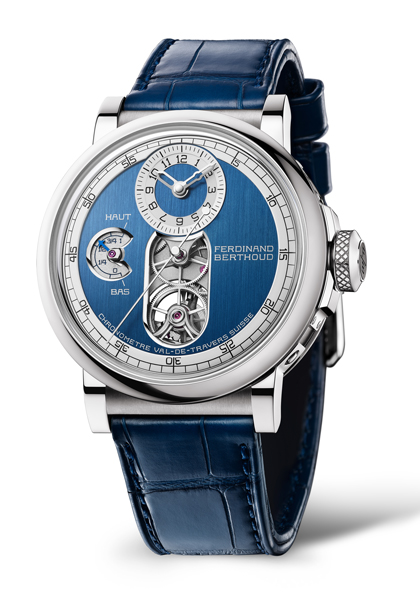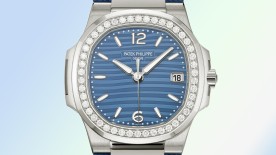The writing has been on the wall for some time, for those who cared to read it. For several months, Karl-Friedrich Scheufele has been saying repeatedly that his workshops can’t keep up with demand, and that output can’t be ramped up in the short term. He’s stated very clearly that every movement produced by Ferdinand Berthoud is a numbered, limited edition. In other words: once a given movement has gone, the collection it equips automatically dies with it. And that’s what is happening now. The original calibre of the FB1, the movement that launched the Berthoud adventure, is bowing out. A historic page is about to be turned.
End of an era
Today, just 38 of these calibres are left. And La Chronométrie is giving them a magnificent send-off in the Chronomètre FB 2T – Final Edition, presented for the first time in a round case. It’s a fitting adieu for this exceptional calibre, now cased in an exterior that up to now has been the exclusive preserve of the workshop’s second collection, the FB2.
These calibres will come with three half-bridges in chamfered, engraved sapphire, supported on polished titanium pillars, granting an unimpeded view of the main movement components and its handcrafted sanded finish.
Three versions will be available: the FB 2T.2 in 18K rose gold with a black satin-brushed dial; the FB 2T.2-1 in 18K rose gold with a satin-brushed ruthenium dial; and the FB 2T.1 in 18K white gold with a blue satin-brushed dial. These three references offer an inspiring point of departure for collectors who, for this Final Edition, will have the opportunity to create their own bespoke timepiece, selecting the case material, and the colour and finish of dial and leather strap. Only the (round) case shape cannot be changed.

A legend in its own lifetime
The name of the FB-T.FC calibre might seem obscure, but in fact it’s quite easy to understand. The T is for tourbillon, and FC stands for force constante (constant force). To say that this calibre altered the course of contemporary watchmaking would be an understatement. It houses a number of unique developments. The most visible is in the escapement: a tourbillon with central seconds. Uniquely, its cage is directly connected to the seconds wheel, thanks to another wheel fitted on the same axis, which has exactly the same measurements as the seconds wheel. Both wheels thus complete one full rotation in 60 seconds – the seconds wheel clockwise and the tourbillon wheel anti-clockwise. To our knowledge, this mechanism is unique to Berthoud.
The constant force of the fusée-and-chain mechanism is also uniquely produced. A Maltese Cross braking function on top of the barrel limits the operating range of the drive spring to where the torque is the most constant. Although the barrel could potentially contain eight coils, the Maltese Cross only allows six. The last two stops on the Maltese Cross prevent the drive spring from sending too much energy (just after it is fully wound) or too little (when the power reserve is depleted) to the drive train. So, not only is the calibre protected from overwinding, its torque is delivered only when it is at its most constant.
Although this movement presents many more innovations, we shall conclude by noting that the pillar architecture of the case is inspired by Ferdinand Berthoud’s marine chronometers. All the movement components are suspended in a vertical construction. This fascinating spectacle can be enjoyed from the sides of the case, through lateral portholes cleverly inlaid (not glued) into the caseband. This rare, precious and ingenious object can be admired one last time at Watches and Wonders.






